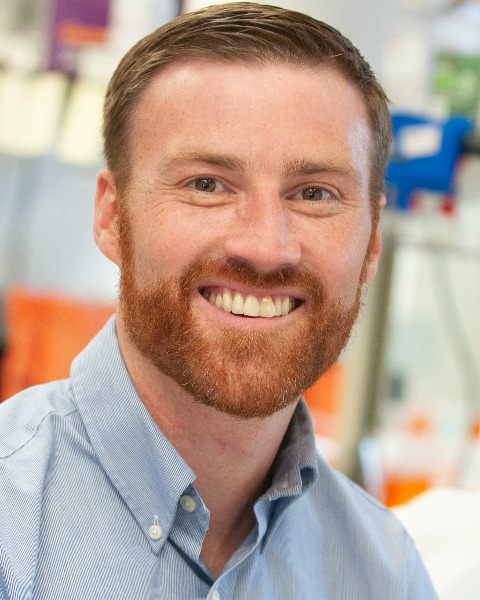Cellular and Molecular Bioengineering
Exploring the DNA damage repair kinetics from different damage agents
(I-344) Exploring the DNA damage repair kinetics from different damage agents

Xinyi Li
Undergraduate Researcher
University of North Carolina - Chapel Hill, United States- GS
Garrett Sessions
Graduate Researcher
University of North Carolina - Chapel Hill, United States - JS
Jacqueline Shine
Research Scientist
Thurston Arthritis Research Center, University of North Carolina, United States - JP
Jeremy E. Purvis
Associate Professor
UNC-Chapel Hill, United States 
Brian Diekman, PhD
Assistant Professor
Joint Dept. of Biomedical Engineering, University of North Carolina at Chapel Hill and North Carolina State University
Durham, North Carolina, United States
Presenting Author(s)
Co-Author(s)
Last Author(s)
DNA damage takes place thousands of times each day in a single cell. The kinetics of DNA repair has been studied most extensively in the context of cancer, but inefficiently repaired DNA can also lead to age-related diseases such as osteoarthritis (OA). OA in the knee and other joints is a highly prevalent, disabling disease with limited treatment options, as the causes and mechanisms of OA are not fully understood. Chondrocytes become senescent with age and the pro-inflammatory milieu secreted by these cells can contribute to cartilage dysfunction. Aged cells have a decreased capacity for efficient DNA repair, but the extent to which the kinetics of the DNA damage response (DDR) are responsible for cellular senescence remains unknown. During the DDR, the accumulation of p53-binding protein 1 (53bp1) at break sites is a sensitive measure of DNA double-strand breaks (DSBs). In previous work, our team has established retinal pigment epithelium (RPE) reporter cell lines in which 53bp1 can be visualized by mVenus fluorescence during cell culture through time-lapse imaging. Tert-butyl hydroperoxide (Tbhp) is used to initiate oxidative stress and leads to DNA single-strand breaks (SSBs). Chemotherapeutic drugs like etoposide (Etop), when used at non-lethal concentrations, can also initiate cellular senescence through the direct generation of DSBs. The objective of this study is to track the kinetics of the DDR in response to Tbhp and Etop, with the long-term goal of matching the acute response to distinct stress with long-term cell fate.
Materials and Methods:
The 53bp1-mVenus reporter RPE cells were plated at 50k each well on a 12-well plate with 10% serum media. After 2 days of recovery, Tbhp and Etop were spiked into Fluorobrite media (for enhanced optical clarity) at concentrations of 10 uM and 1 uM, respectively.
Live-cell images were taken with a Nikon Ti Eclipse microscope operated by NIS Elements software. During the imaging process, cells were incubated in an enclosure at 37 °C with 5% CO2. Images were taken at 55-second intervals during the first 2 hours of treatment and then every 5 minutes for another 2 hours. Computational pipelines tracked cells over the imaging period. The accumulation of 53bp1 was measured by mVenus intensity and was plotted against time through Python pipelines to establish a “DNA damage history” for each individual cell.
Results, Conclusions, and Discussions:
We found that RPE cells treated with Tbhp exhibited more prominent 53bp1 fluctuation than Etop-treated cells. The average 53bp1-mVenus intensity for Tbhp-treated cells gradually increased at the beginning of imaging and sped up after 2h (1.1x increase at 2h and 1.7x at 4h), while the average 53bp1-mVenus intensity for Etop-treated cells remained consistent for the first 3h before demonstrated a rapid increase (1.4x increase at 4h).
Therefore, Tbhp-treated cells tended to start 53bp1 accumulation earlier than Etop-treated cells. According to the live-cell time-lapse data set, 53bp1 puncta were generated more rapidly in Tbhp-treated cells. These distinct dynamics may be related to the mechanism of DNA damage, as Tbhp causes damage by triggering oxidative stress in a manner that is independent of the cell cycle, whereas etoposide causes DSBs through replication stress and mainly affects the S phase of the cell cycle. Therefore, etoposide does not initiate DSBs immediately; rather, it takes time for DSBs to form during cells’ attempt to proliferate, which was supported by the relatively consistent 53bp1-mVenus intensity in 1-3h. The 53bp1 levels remained high at the end of the imaging period for both groups, suggesting that DNA damage from Tbhp and Etop could not be effectively repaired within 4h of continuous exposure to these agents.
Our next step is treating cells in Tbhp and Etop for 7 days to induce senescence under live-cell imaging. At the end of culture, protein staining will be applied for early features of senescence, which will then be matched with the cell-tracking data to model the dynamics of DNA damage and senescence induction.
The results from this study in a reporter cell line provide guidance for further research with human primary chondrocytes, which will help identify whether the inefficient repair of DNA leads to chondrocyte dysfunction with age, and how specific environmental factors result in cell senescence and increasing risk of aging-associated diseases like OA. Additionally, this study can be extended to track cell fates with different kinetics of DNA damage/repair, which provides insight into the cell fate choices of proliferation, apoptosis, and senescence.
